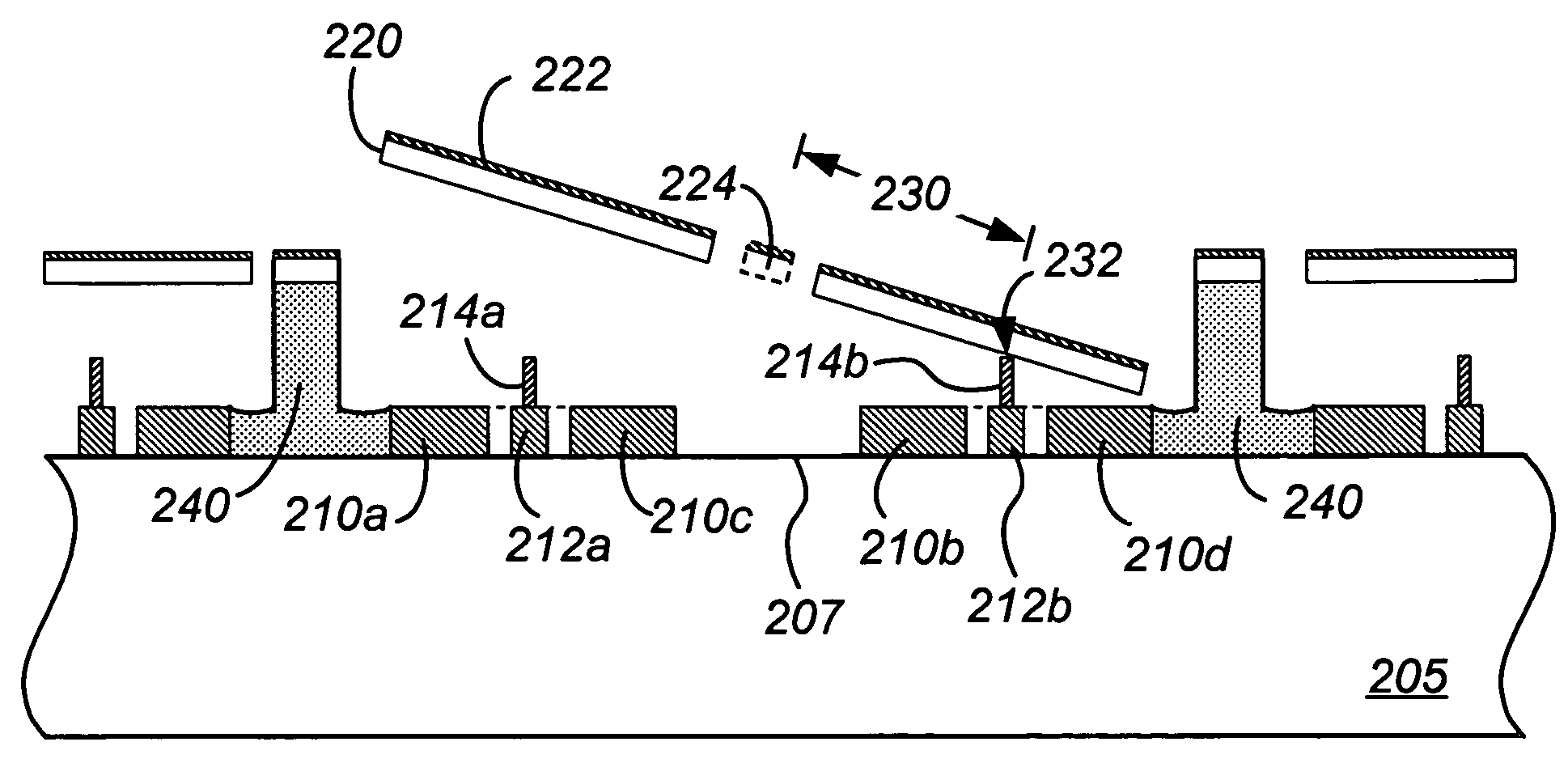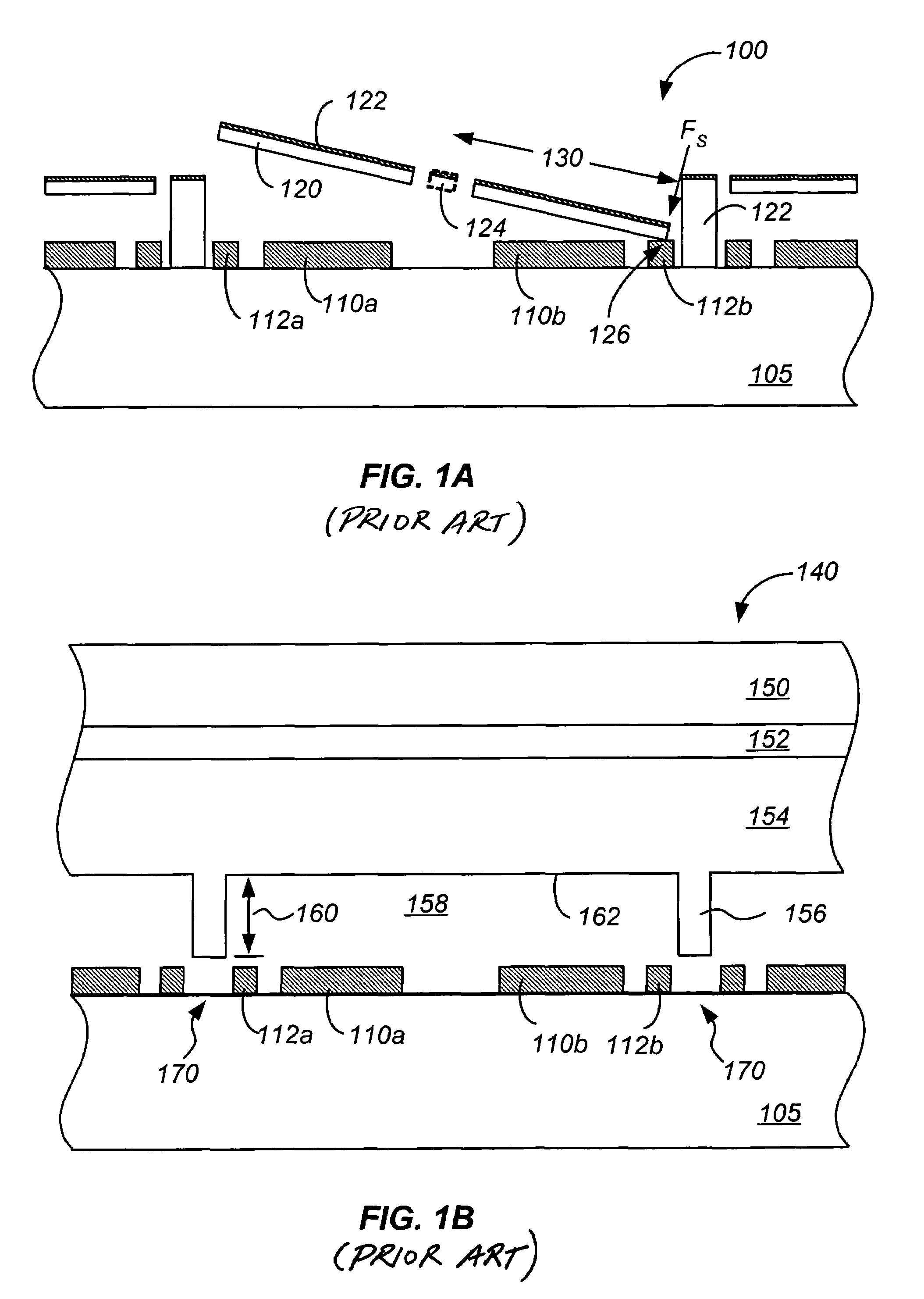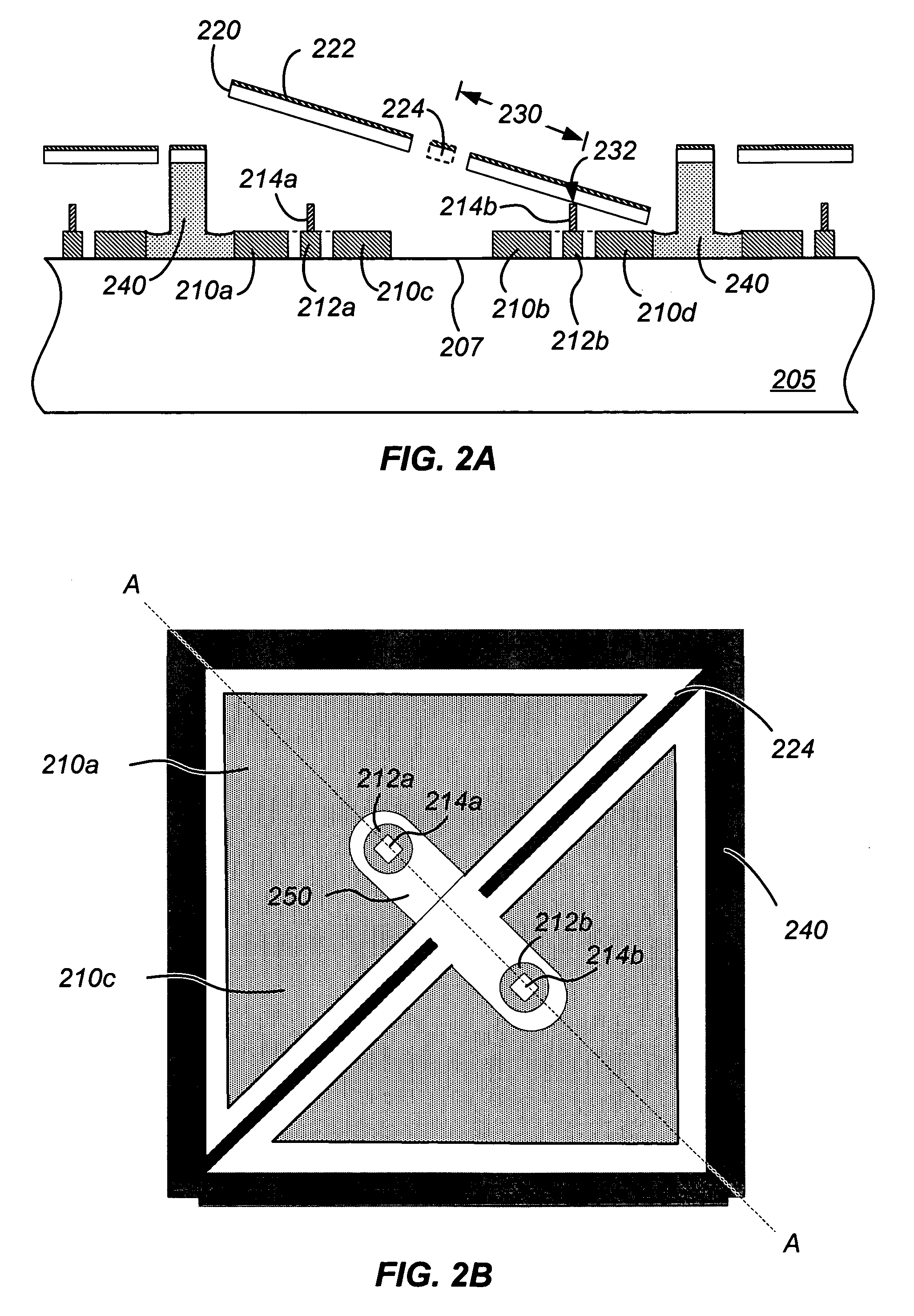Method and structure reducing parasitic influences of deflection devices in an integrated spatial light modulator
a spatial light modulator and deflection device technology, applied in the field of semiconductor processing techniques, can solve the problems of time-consuming and expensive process, inability to meet the requirements of the application, and undesirable adhesion of the suspended member to the electrode, so as to reduce the dimensions of the composite substrate used in one embodiment, reduce cost, and relax the alignment tolerances used during the substrate bonding process
- Summary
- Abstract
- Description
- Claims
- Application Information
AI Technical Summary
Benefits of technology
Problems solved by technology
Method used
Image
Examples
Embodiment Construction
[0024]According to the present invention, techniques for semiconductor processing are provided. More particularly, the invention relates to a method and structure for forming an integrated spatial light modulator. Merely by way of example, the invention has been applied to a method of forming standoff structures in a bonded substrate structure and micro-electromechanical systems with reduced parasitic forces. The method and structure can be applied to other applications as well, such as actuators, sensors, detectors, and display components.
[0025]FIG. 1A is a simplified cross-sectional illustration of a conventional spatial light modulator. Suspended member 120 is suspended at a predetermined height above a substrate 105. Suspended member 120 has a reflective surface 122 coupled to the member. In addition, a torsion spring 124 is coupled to both the suspended member and a support structure (not shown) on substrate 105. In the figure, an electric potential has been applied between ele...
PUM
 Login to View More
Login to View More Abstract
Description
Claims
Application Information
 Login to View More
Login to View More - R&D
- Intellectual Property
- Life Sciences
- Materials
- Tech Scout
- Unparalleled Data Quality
- Higher Quality Content
- 60% Fewer Hallucinations
Browse by: Latest US Patents, China's latest patents, Technical Efficacy Thesaurus, Application Domain, Technology Topic, Popular Technical Reports.
© 2025 PatSnap. All rights reserved.Legal|Privacy policy|Modern Slavery Act Transparency Statement|Sitemap|About US| Contact US: help@patsnap.com



